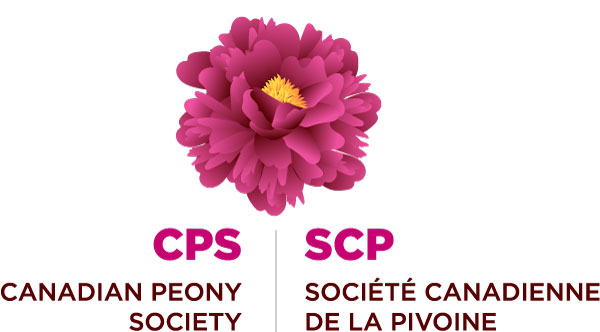Perfecting Peonies by Blaine Marchand
The peony gardens at the Central Experimental Farm hold one of the largest Canadian collections of peonies created by Arthur Percy (A.P.) Saunders. Born in London, Ontario, in 1869, both his father, William, and his mother, Sarah Agnes, were self-taught enthusiastic botanists. His father became the first Director of the Experimental Farms of Canada in 1897 and held this position until 1911. Their son and his siblings (four brothers and one sister) were brought up in an atmosphere of horticulture and collecting of plants.
The Saunders family was a cultured family, given to gatherings where various members played musical instruments, sang songs and recited poetry. A.P. Saunders studied art in France and this training gave him a sense of colour that helped greatly when he began to work on hybridizing peonies.
Educated at the University of Toronto (BA), Göttingen/Berlin (Chemistry) and John Hopkins University (PhD), in 1900 he became a professor of chemistry at Hamilton College in Clinton, New York (about a four hour drive south of Ottawa). Originally founded in 1793 as the Hamilton-Oneida Academy, it was officially chartered in 1812 as a liberal arts college for men (which it remained until the 1960s).
It was at Hamitlon when A.P. Saunders was provided with a house on College Hill, including a space for a garden, that he began growing plants, including peonies. He immediately started detailed garden notebooks which he maintained throughout his long life.
Peonies require a period of cold dormancy and the climate of northern New York state was ideal. As a result, about 1905, Saunders began to focus on growing peonies. At that time, he already had 248 plants in his gardens, many sent by growers from around the world.
Saunders started his systematic work on species hybrids in 1917. He had perfected his hybridization techniques at the Experimental Farm. During one visit in 1928, Saunders took pollen from P. coriacea, a species peony from Spain and the mountainous regions of Morocco. He later received a division of the plant itself and began hybridizing, crossing the hybrids P. albiflora and P. coriacea. In 1939, this resulted in a group of peonies with single to semi-double flowers of a most unusual colour – lavender.
Professor Saunders was a popular teacher. Students nicknamed him “Stinky” due to the smells that emanated from experiments performed in his chemistry lab. He was often seen driving about the college in his Model A Ford roadster, in winter wearing a raccoon coat and sometimes a straw hat. Students gathered in his house to listen to string quartets and to sit around him in the cluttered library as he read aloud from books.
His fondness for Hamilton College can be found in some of the names he gave to his peonies. Here are some examples.
Ellen Cowley (Saunders1940 – a semi-double hybrid of a deep bright cherry)
The daughter of Hamilton College president, William Harold Cowley, Ellen Cowley was born at 8am on the morning of graduation day of the class of 1940. Her father went straight from the hospital to commencement ceremony at 10am. It is said while he made it through the service, in his excitement he did mix up a few diplomas. To honour the event, Saunders named a new hybrid after the new baby daughter.
Alexander Woollcott (Saunders, 1941 – a semi-double hybrid of a shining crimson)
Alexander Humphreys Woollcott, a graduate of Hamilton College, was a renowned American critic and commentator for The New Yorker magazine, as well as a member of the infamous Algonquin Round Table. He gained fame as a result of his witty and acerbic observations, becoming the most quoted man of his generation. He died suddenly in 1943, having suffered a stroke in the middle of radio broadcast. He is buried in the Hamilton College cemetery. The peony named after him is considered a planting companion to Ellen Cowley.
Grace Root (Saunders, 1940 – a single hybrid of clear light salmon pink)
Grace Cogswell Root was married to Edward W. Root, a professor of art appreciation at Hamilton College. Professor Root’s grandfather, Oren Root, had purchased a house near the College and built an extensive garden. Grace and Edward expanded and developed the garden, which became known as The Glen. After her husband’s death, Grace created the Root Glen Foundation so it remained a place of beauty open to the public. In 1971, Grace transferred ownership of the Glen to Hamilton College. Among the plants found in the 7.5 acre garden are 19 herbaceous and 49 tree peonies hybridized by A.P. Saunders.
Silvia Saunders (Saunders, 1921 - semi-double hybrid of bright clear rose-pink, fading lighter toward the center)
The daughter of A.P and Louise Saunders, Silvia Saunders was born in 1901 and raised on College Hill. After working as a commercial artist in New York and then a photographer, she returned to Hamilton in 1951 to take care of her parents and help her father with his hybrid peony business. Continuing the Saunders tradition, their home was opened for cultural and musical evenings and annual Christmas parties. In 1995, on the first anniversary of her death, the Saunders family home was dedicated in her honor and became a student residence. Silvia Saunders is buried next to her parents in the Hamilton College cemetery.
